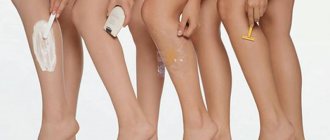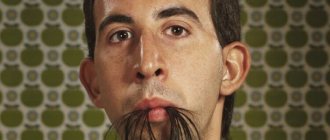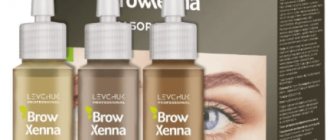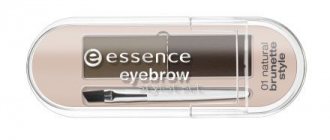What is laser hair removal
Laser hair removal is a medical procedure aimed at removing excess hair using a laser. The peculiarity of the manipulation is the destruction of the hair bulb (follicle) containing the natural dye melanin. Laser beams, passing through the skin, act on the pigment. As a result, melanin heats up and destroys neighboring areas of glands, blood vessels and hair growth areas. The nutrition of the hair follicles stops, the hairs become thinner and fall out. After epilation, regrowth of vegetation in this place is impossible.
Procedure
The manipulations are performed by a specialist who is familiar with all the rules of the laser procedure. Before conducting the course, the cosmetologist finds out whether the client has chronic diseases, what medications are taken, and whether there are allergic reactions to gel compositions.

The area to be treated is wiped with a disinfectant, then a cooling gel is applied. To protect against burns, use a device with a cooling attachment. The doctor and patient wear glasses that protect their eyes from laser flashes. The doctor selects the power and type of laser that corresponds to the client’s skin phototype, color and hair stiffness. Moves the device that creates light beams across the selected area. After surgery, an antiseptic is applied to the treated surface.
Types of lasers used for hair removal
The effectiveness of light radiation depends on the type of laser. The following types of devices are often used in salons:
- Alexandrite laser – not used on dark skin due to lack of effect. Removes dark and light brown hair on fair skin, but does not work on red and gray hair. Gets rid of ingrown hairs. Sometimes causes lightening or darkening of the skin.
- Neodymium laser – removes dark and light hair from pale and tanned skin. It stops feeding the follicle, affecting not the melanin, but the blood network of the hair follicle. Used for the formation of blackheads after shaving and on irritated skin. Automatically recognizes hairs to be removed. The treatment area is affected pointwise. After 7 sessions, 95% of dark or 80% of light (gray) hairs disappear from the treated area.
- Diode laser is an innovative model with great functionality. Passing through the skin, it affects melanin and follicular vessels, easily removes hair on tanned and dark skin prone to hyperpigmentation, without causing irritation. The radiation power is adjustable.
Sometimes they use a ruby laser - an outdated model that only removes dark hair on light skin.
Mysterious East
The countries of the East - Ancient Egypt, Persia and Mesopotamia - are considered the historical homeland of the original cosmetic procedure. You can often come across such a name for sugaring as Persian hair removal, which reflects the geography of origin of the technique. There are several versions of the origin of sugaring, but the roots of each of them go back to the ancient Eastern civilization, which was famous for its special attitude towards female beauty.
Version No. 1: Persian
The former Persian Empire, on whose territory Iran is now located, is considered, according to one version, the ancestor of sugaring. Like any Muslim state, Persia had its own canons of female beauty and its own regulations regarding the appearance and hygiene of women. The appearance of sugaring is associated with an ancient pre-wedding ritual . The newly-made Persian bride had to enter married life pure and immaculate, ready to devote her soul and body to her legal spouse. A mandatory requirement was to get rid of all excess hair on the body, with the exception of the head, eyelashes and eyebrows. Disobedience to this requirement could lead to unpleasant consequences - the family was threatened with shame, and the bride remained unmarried until the end of her days.

To get rid of hair, both Persian brides and married women used sweet paste. And the process of hair removal itself was akin to a sacrament and a special art, the subtleties of which were passed on from mouth to mouth from mother to daughter. Women were required to keep their bodies smooth and clean throughout their marriage - this symbolized purity and respect for their husband.
Until the first millennium BC, sugar cultivation was limited to areas of what is now Oceania. Therefore, we can assume that before this time, ancient sugaring was carried out with mixtures based on honey.
Version No. 2: Egyptian
The cult of the naked body , which flourished in Ancient Egypt in the 3rd century BC, according to historians, could also serve as the basis for the emergence of new methods of getting rid of hair. The presence of hair on a woman’s body was considered unacceptable, and a representative of the fairer sex, covered with excess hair, was considered “dirty.” Egyptian kings demanded that concubines be brought to them “clean and smooth”, without body hair. At first, Egyptians used extremely painful and primitive means for hair removal - blades and tweezers, as well as devices that combined the functions of a hair trimmer and razor. These exhibits date from 1900-1450. BC, and are now on display in the Egyptology Department of the British Museum. Over time, methods of dealing with excess hair are improved, ancient hair removal loses its signs of execution and becomes a real art. “Sukkar” appears - a method of getting rid of body hair, known today as sugaring. During the conquests of Alexander the Great, women were obliged to inspire men to feats of arms with their beauty. Beautiful Egyptian women were treated as unearthly creatures, and they were forced to maintain this cult by carefully caring for themselves. Some clubs were created where women gathered in beautiful flowering gardens to help each other carry out cosmetic procedures. The main standard of femininity and beauty in Ancient Egypt was Queen Cleopatra , whose life dates back to 69-30. BC. It is not for nothing that legends are still made about the smoothness and purity of her skin - Cleopatra devoted a lot of time to self-care. According to legend, the creation of sugaring is attributed to the court healer of the ancient queen. At her request, an innovative method for getting rid of hair was found for that time - using a sweet mass. The basis of the product was honey with the addition of aloe juice, citrus extracts and crushed mint, which cooled the skin and served as a mild pain reliever. The maids lubricated Cleopatra's skin with a sweet mass, and then removed it along with excess hair.
According to another version, another famous Egyptian woman, Nefertiti, was the first to try sweet hair removal. The “main wife” of the ancient Egyptian pharaoh Akhenaten lived in Egypt in 1370-1330 BC and was also famous for her unearthly beauty.
Version No. 3: random
Many historians believe that the prototype of the sugaring technique was invented independently of each other in several countries in Asia and Africa . So, in Tunisia, the procedure was known as “sokker” - which means “sugar”. The composition of the Tunisian hair removal product is in many ways similar to modern sugaring pastes: sugar was dissolved in water and a small amount of lemon juice was added. There is a version that sugar was used to remove excess vegetation by accident. At first, wounds and burns were treated with the sweet mass, trying to prevent infection of the wound. When removing the mass, it was noticed that it simultaneously removes hairs, leaving the skin clean and smooth. During the period of the Turkish Empire, sugar hair removal became widespread and was known to Turkish women as “agda”. The inhabitants of numerous harems had to keep their bodies clean and carefully take care of themselves. Here, hair removal has also turned into a real art, which has survived to this day.

Sweet masses, similar in composition to Egyptian ones, were also used by the ancient inhabitants of the Celestial Empire. At the same time, historians believe that Chinese beauties did not borrow the technique, but came to it on their own.
Laser hair removal: results after the first session
When you decide to undergo laser hair removal for the first time, you should not count on an instant solution to the problem. After the first session, the stubble will continue to grow, because... The lifespan of hairs is 3.5 – 6.5 years. A third of the hair is visible on the surface of the epidermis. The remaining hair follicles are dormant. Removing one instance leads to the appearance of neighboring ones, so the effect of the first session is invisible.

There are three stages of hair development:
- the intensive growth phase covers 80% of the vegetation and lasts 2–5 years;
- a period of rest during which the aging of the follicle occurs;
- the dying stage affects 15% of hairs.
Read also: Which is better and more effective: electrolysis or laser hair removal (comparison)
The laser only affects actively growing hair. 7–10 days after the first session, new hair growth occurs. After 2.5 weeks, the hairs are torn away from the destroyed bulbs and fall out. A similar situation is observed after depilation with sugar or wax: after 3 weeks, the treated area is covered with stubble. As a result of the laser action, the structure of the hair changes. Growing hairs become light, soft and thin.
How many sessions to achieve lasting results?
One session is not enough to get rid of excess hair forever. It is necessary to conduct a course, the duration of which is determined by a specialist based on the individual characteristics of the clients. The pause between the first and second laser hair removal procedures is 30–45 days. The rate of stubble growth slows down by the third session. Further, the interprocedural period increases by 14 days and by the eighth session is 180 days.

In order not to doubt the effectiveness, the sequence of procedures is followed. On average, the course consists of 8 – 10 sessions. If you do not go through the full complex, the hair will become stiffer, begin to grow faster, and after 5 years the growth will be completely restored. To prevent this from happening, maintenance procedures are performed annually after completing the course.
When deciding how many times to perform hair removal, the cosmetologist takes into account the following factors:
- age (the older people are, the longer it takes to regenerate hair);
- hair color (the darker the color, the higher the likelihood of maintaining the result);
- hair growth phase;
- density and thickness of vegetation (fine hairs grow slowly);
- hormonal background of the client (if elevated hormone levels are detected, the number of procedures is increased).
In different parts of the body, the structure and rate of hair growth are different, so the effect of the procedure lasts for different amounts of time.
Number of sessions in the armpits and arms
The result of laser hair removal depends on the structure of the hair. The forearms are covered with thin and soft hairs, which become thinner after the first laser exposure. If the hair on your hands is coarse, you will need to carry out 3 - 4 sessions with an interval of 2.5 - 3 months. Hairs grow in the axillary area, the color of which contrasts with the color of the skin. The effectiveness of the manipulations is visible after 2–3 sessions (with a pause of 2–2.5 months).
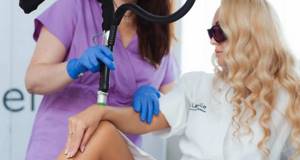
Duration of the effect of laser hair removal on legs
People often come to beauty salons to perform hair removal on their legs. The procedure is painless. The effect appears after 8 sessions. The interval between parts of the course is 6 – 18 weeks. At this time, thin, sparse hair grows and is gradually removed. The procedure makes the skin of the legs velvety. If you complete the full course, the effect will last for two years. Then, one procedure is performed annually to maintain smooth skin.
Laser hair removal of the bikini area
In the intimate area, any method of hair removal is perceived as painful, since the skin here is highly sensitive. The advantage of laser hair removal is that there is no roughening of the skin or ingrown hairs, as is the case with hot wax hair removal. The laser removes hair from hard-to-reach areas of the bikini without causing irritation to the epidermis. After the second session, the amount of hair is reduced by 30%. After completing the course, laser hair removal of the bikini area lasts for 2 years.

How long does the effect of laser hair removal on the back, chest and abdomen last?
The laser effectively treats unwanted hair growth in the following areas:
- backs;
- shoulders;
- linea alba;
- breasts;
- sacral region.
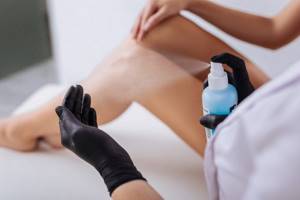
Judging by the reviews, the operation is as comfortable as possible. The validity period depends on the structure and growth rate of the hair. It takes about six sessions to get rid of hair forever.
Duration of facial laser hair removal
During the manipulation process, the laser acts on vellus hairs that grow in the eyebrow area and other parts of the face:
- above the upper lip;
- on the cheekbones;
- forehead;
- jaws;
- chin.
A complete facial treatment with a diode laser will take 45 minutes. After the first session, a fifth of the hair will disappear and ingrown hairs will be removed.

If a client develops black, coarse hair on his face due to hormonal disorders, then the patient first needs to contact an endocrinologist, who will get rid of endocrine pathologies. After treatment, sessions can be resumed. To remove hair, you will need 3–4 sessions, which take place at intervals of 2.5–3 months. With a low concentration of the male hormone (androgen), the procedure lasts two months (the effect of other types of depilation lasts up to 1.3 months).
How is deep bikini hair removal done?
Let's start with the fact that it is better to entrust bikini hair removal to a professional, because it is difficult to do it yourself, and the result is not the best. Experts offer two options - bikini hair removal and deep bikini. If the first option, when not all hair is removed, but only from the visible part in front, is quite enough for men, then girls prefer the second.
Deep bikini - hair removal not only from the outer part, but also between the legs, on the labia and near the anus. This option provides smoothness for several weeks, but the sensations from the session are much more unpleasant.
There are several basic methods:
- using hot wax. The process takes no more than 15 minutes, is quite unpleasant and painful, the effect lasts up to a month. There is no harm from manipulation, but only in the case of an experienced master. If the technique is not followed, burns and capillary rupture are possible;
- using sugar paste (sugaring), which gives the same effect as wax. The process takes up to an hour and is less painful. A side effect is a large number of ingrown hairs, but the advantage is that over time the procedure can be repeated less frequently;
- Laser hair removal involves hair removal and destruction of the follicle, so over time the hair stops growing completely. For the desired effect, you need to undergo at least five sessions and follow all the cosmetologist’s recommendations. The process takes up to 40 minutes;
- using an epilator, which pulls out hair at the root, acting like wax or paste. But it feels very painful and unpleasant, and there is a high risk of serious irritation. The only option is epilators with a cooling effect.
Many people complain that irritation, redness and mild pain often appear after the bikini hair removal procedure. This is a normal phenomenon that goes away after a couple of days.
Contraindications for laser hair removal
In order to get the desired result and not harm your health, before going to the salon, identify possible contraindications to the procedure. Depending on the severity of the ban, two groups are distinguished.
Absolute contraindications
Laser hair removal is strictly prohibited if:
- oncological diseases;
- epilepsy;
- herpetic rashes;
- diabetes mellitus

Relative contraindications
Laser hair removal is permitted after the following restrictions have disappeared:
- ARVI in the acute stage (it is better to wait for recovery);
- pregnancy;
- breast-feeding;
- damage to the skin;
- taking drugs that affect blood clotting or tetracycline antibiotics;
- phlebeurysm;
- benign tumors.
Tanning reduces the effectiveness of the procedure and increases skin sensitivity.
How to increase the effectiveness of laser hair removal
To increase the expected effect, follow the rules of preparation for the procedure and behavior after hair removal.
Preparation for the procedure
When preparing for a session, follow the rules:
- 10 - 12 weeks before the session, stop any type of hair removal.
- 14 days before the procedure, stop sunbathing and going to the solarium.
- 7 days before the session, stop using cosmetics containing fruit acids and benzoyl peroxide.
- 2 days before the procedure, the hair is shaved off, leaving stubble, the height of which does not exceed 0.3 cm, so that the laser beams penetrate the skin and destroy the bulb.
- On the day of hair removal, take a shower (do not use moisturizers or deodorants in the treatment area). Wear loose underwear made of natural fabric so as not to further injure the skin.
Rules of behavior after the procedure
To avoid inflammation of the treated areas, during the first four days do not take a hot bath, do not visit the sauna or swimming pool. Use only those cosmetics recommended by the doctor.
The remaining hairs should not be pulled out with tweezers, otherwise the procedure will be less effective.
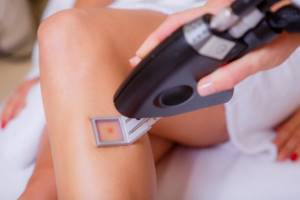
The main advantage of laser hair removal is its efficiency. After the first session, a miracle will not happen. When you see hair growing, you shouldn’t be upset or indignant. Laser hair removal is a cyclical procedure. To achieve lasting results, take a course, the duration of which is set individually. Recommendations for preparing for the session and skin care will help maintain the effect of the procedure.
Waxing. How is it done in a beauty salon?
So, after you come to the salon and tell the specialist about your desire to have waxing, before starting the procedure you will have to undergo a thorough skin diagnosis. A professional cosmetologist will individually select the type of wax specifically for your skin and advise how best to care for your skin after hair removal in order to slow down hair growth and prevent it from growing under the skin. And if there are lesions, wounds or scratches on the skin, the cosmetologist will suggest postponing the procedure until they heal.
At the very beginning of the procedure, you will be placed on a soft couch or cosmetic chair. Then the skin will be cleaned with a special disinfectant lotion and dried with napkins, since the wax is applied only to dry, clean skin. Often in salons, masters use tonic lotions with menthol. Menthol creates a pleasant cooling effect on the skin and reduces discomfort during the procedure.
While the cosmetologist thoroughly and carefully cleanses your skin, a cassette with wax is heated in a special applicator-heater. As soon as the wax heats up to a temperature of 45-50 degrees and becomes liquid, it will be applied in a very thin layer to your skin, strictly according to hair growth.
And then the most interesting thing: the master places a special paper napkin on top of the wax, presses it tightly with his hand and... with a sharp movement of his hand, removes this napkin. Along with unwanted hair, of course. This procedure, although not very pleasant, is still less painful than the same procedure at home.
After hair removal, the specialist will immediately apply a special product to the skin that slows down hair growth. It selectively acts on the hair follicle, destroys its cells and increases the interval between hair removal procedures. Professional lotions that slow down hair growth are not sold in regular stores, as this is a very concentrated product. Typically, such products are contained in ampoules and are used only by professional cosmetologists.
At the end of the procedure, the master will take a little care of your skin: relieve irritation, redness, soften and moisturize it. For this purpose, special products are used - oils, foams, gels and emulsions - with natural herbal extracts. Perhaps the specialist will suggest that you purchase some kind of peeling or cream based on fruit acids for home use. This product is really worth purchasing, as it not only exfoliates dead skin cells, but also prevents ingrown hairs after all types of depilation.
Well, to ensure that your skin remains beautiful, soft and smooth at any time, do not forget to regularly use nourishing cream or body milk. After all, it’s not difficult at all!
Tags: hair removal, body care, cosmetologists, beauty salon, removal, hair, skin


